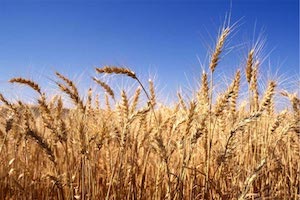As wheat producers across Kansas prepare to apply herbicides to their crops this spring, Kansas State University weed management specialist Sarah Lancaster is providing tips for effective application. While some herbicides need to be applied after tillering, others should be used before jointing. Many herbicides are also designed to be applied during the boot stage, which means producers must familiarize themselves with the differences before using the products.
Lancaster notes that dicamba can be used on wheat between the two-leaf and jointing stages of wheat, but it should never be applied after it reaches this stage — doing so can lead to significant yield loss. In addition, products labeled only for use on herbicide-resistant wheat should also be utilized prior to jointing. Agility SG, Olympus, Outrider, PowerFlex HL, Pulsar, and Rave all fall into this category.
Ally + 2,4-D, Amber, Finesse, Glean, Starane Flex, and Starane NXT can be applied later in the spring, prior to the boot stage. When 2,4-D is applied during the jointing stage, wheat sometimes shows prostrate growth, but yields are typically unaffected if it is used before the boot stage. MCPA is generally safer to use on wheat than 2,4-D, and it can be applied after the three-leaf stage.
Several herbicides can be applied up to the time the flag leaf is visible, or even after this stage of growth – this includes Affinity BroadSpec, Affinity TankMix, Ally Extra SG, Express, Harmony, Harmony Extra, Huskie, and Quelex. Pixxaro EC, a newer herbicide, can be used from two-leaf and flag leaf. It is often used to control everything from flixweed to buckwheat.
For more information on weed control products and how they can be effectively used on wheat, contact your local K-State Research and Extension office for a copy of the “2021 Chemical Weed Control for Field Crops, Pastures, and Noncropland” guide.
